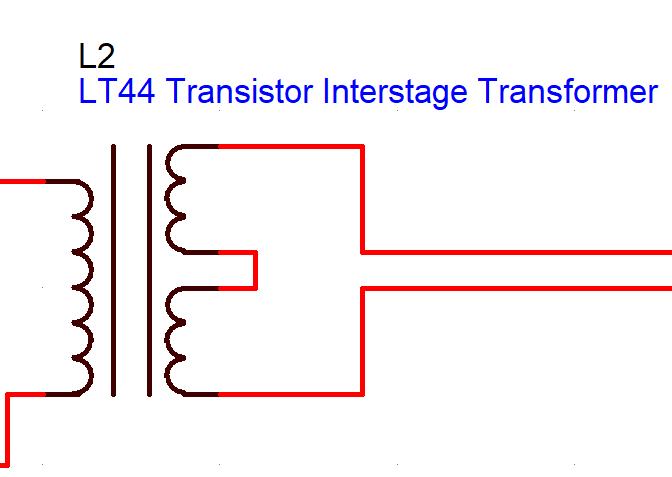
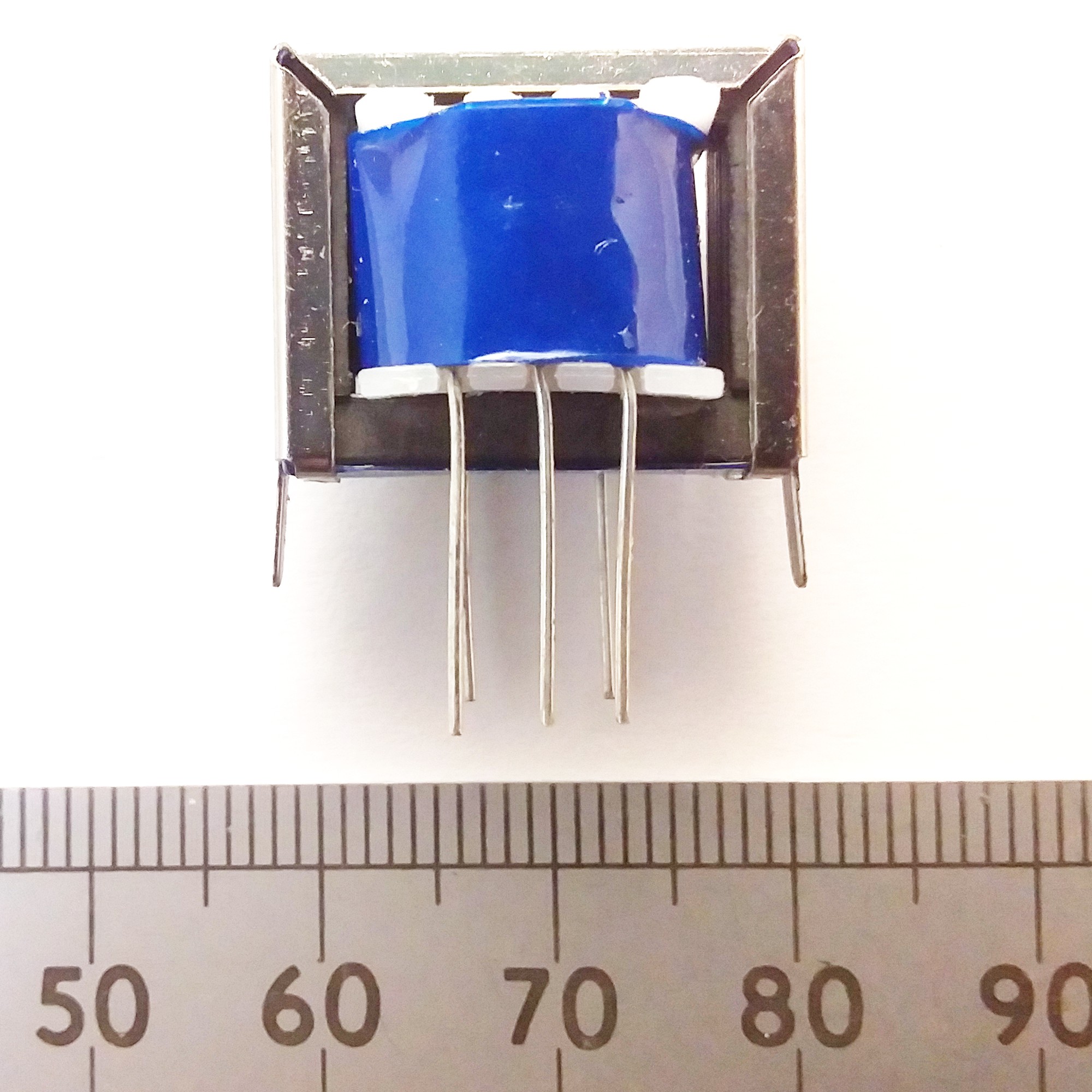
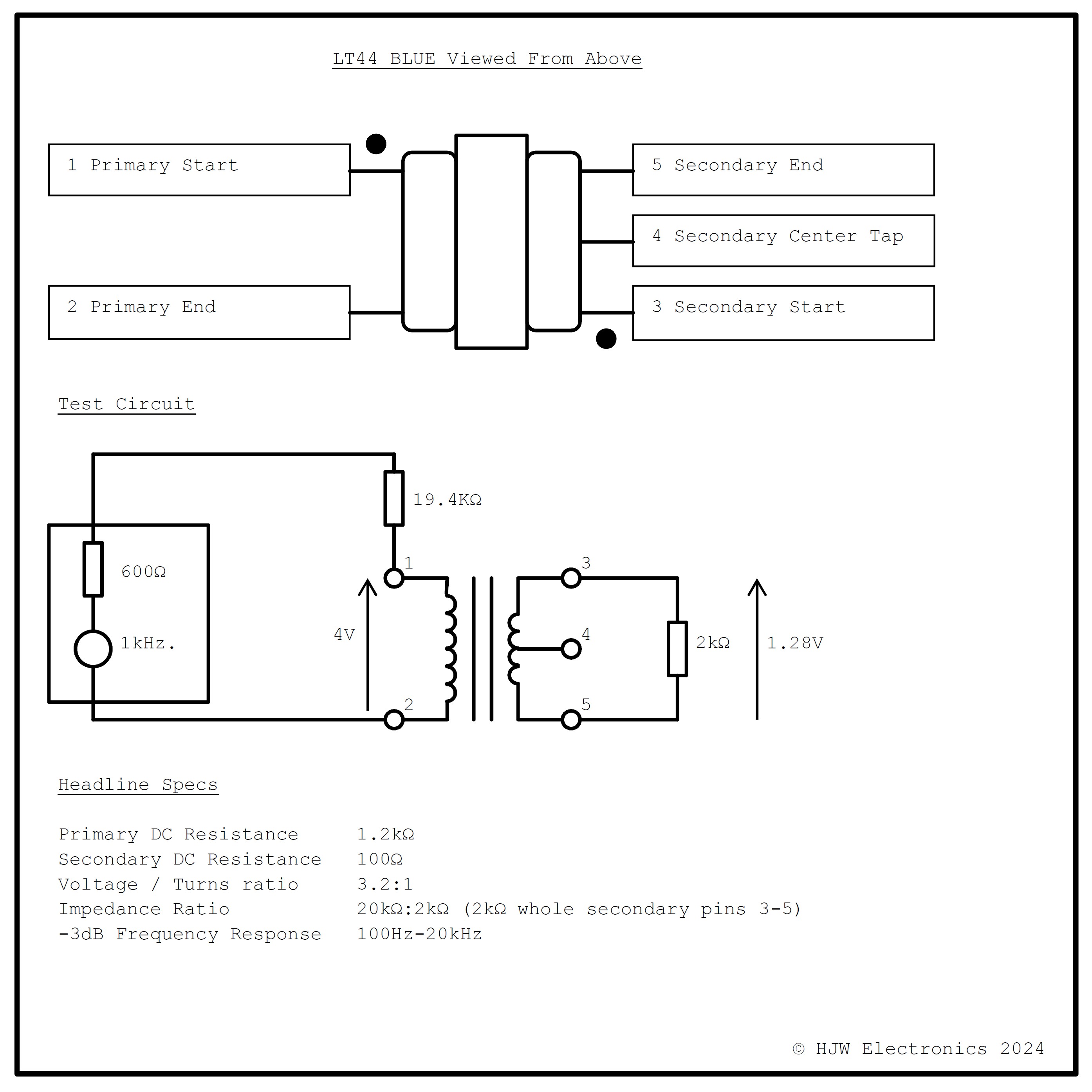
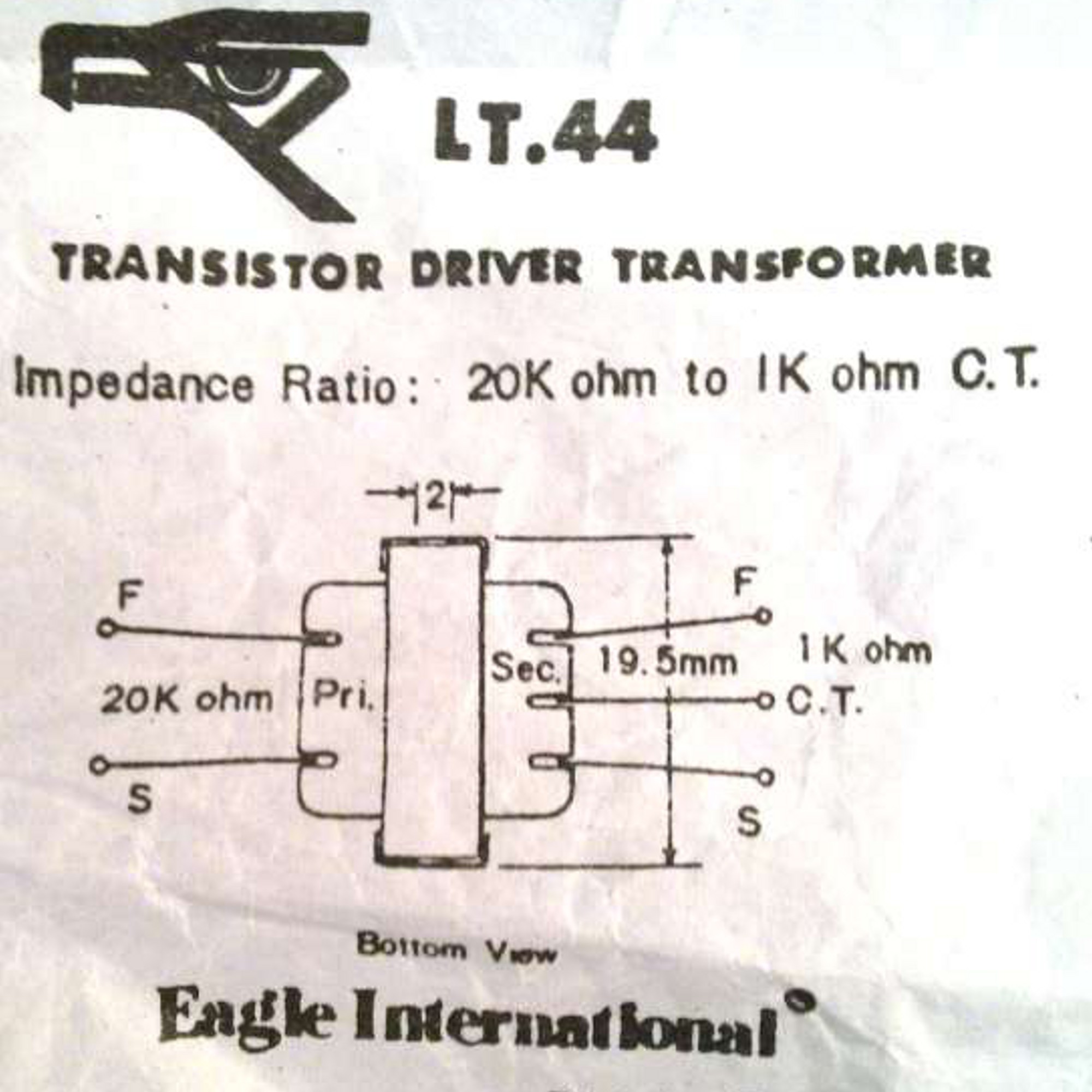
This is an LT44 audio transformer. These were once used in small transistor radios to couple a single transistor voltage amplifier audio stage into the two transistor phase-split class B output stage, all using the PNP germanium transistors that were available at the time. That use is long since obsolete. Note the potentially misleading 1K Ohm printing on the old paper slip data sheet.
In the crystal set the audio transformer provides a variety of functions.
1) It increases the impedance of the ceramic earpiece as seen by the crystal set. This allows the resonant tank to "swing" more freely. This helps to keep the tuning sharper. The earpieces have a very high direct current resistance but a lot of capacitance, about 27nF. That is a heavy load to put across the resonant tank via the diode. Impedance is the resistance seen with an alternating current, in this case the audio signal.
2) As well as keeping the tuning sharper, it provides a better impedance match. This is a somewhat tricky concept to explain. You might liken it to a gearbox with an under-powered, fast running petrol engine (the main resonant coil and variable capacitor) driving heavy tractor wheels (the earpiece). The better match also allows the freely swinging resonant tank to more readily overcome the barrier posed by the forward voltage drop (Vf) of the diode.
3) It provides a direct current path to ground. Without that, the earpiece tends to charge up to the maximum voltage of the audio signal and stay there, producing zero sound output. You might see a resistor connected across the earpiece in other designs. That works, but it creates an energy loss. There is some loss in the transformer as well, so you don't get something for nothing. Older germanium diodes sometimes leaked current quite a bit in the reverse direction, and you would find one that worked well without a resistor across the earpiece. That's not useful with a modern Schottky diode, in a kit which has to work every time.
4) The inductances of the transformer windings along with the 470pF capacitor form a fortunate audio frequency resonance at about 2 kHz, along with the capacitance of the earpiece. This helps the sensitivity a bit further by concentrating the audio energy into the peak range of human hearing.
The earpiece, transformer, parallel capacitor, and the low reverse leakage, low forward voltage Schottky diode make for a highly consistent and sensitive combination with very little variation.
For the electronics engineers, here are some technical measurements made on one LT44 sample with a Peak LCR45 passive component tester.
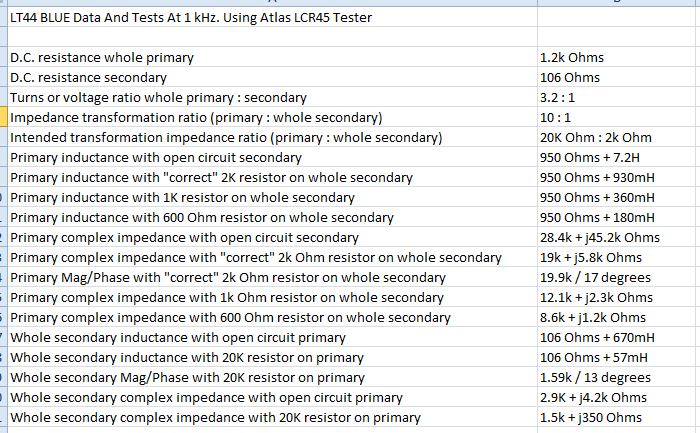
Navigate Up